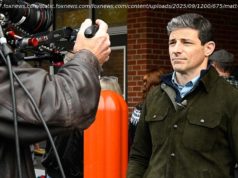Gov. Rick Scott and his transportation agency moved quickly to absolve themselves of any responsiblity in the failure of the pedestrian bridge that killed six, but records show FDOT provided significant oversight of the project.
In the hours after the collapse of the Florida International University pedestrian bridge that killed six on Thursday, the Florida Department of Transportation quickly attempted to publicly distance itself from liability, calling its role “limited.”
But documents of meetings from FIU and the city of Sweetwater over the past three years, and interviews with industry experts who asked that their names not be used because they still work with the agency, show FDOT’s involvement on the design and construction of the bridge was much more significant. For example:
▪ FDOT was a member of the select committee that approved the design-build team, MCM and FIGG Bridge Group, which built and installed the structure. It was also involved in selecting the consulting engineer, Bolton Perez and Associates, chosen to make sure the plan was followed and was carried out safely.
▪ FDOT staff attended weekly, bi-weekly, and then monthly meetings of the design-build team and FIU staff, and had input on the design and location of the bridge.
▪ FDOT served as a consultant on dozens of details, such as how to get a concrete mixture combination approved and whether to move pylons closer to the C-4 canal the bridge crossed.
▪ And just hours before the bridge collapsed, FDOT’s project director was at a two-hour meeting called by the design engineer to discuss progress on the bridge.
Since the accident that killed six, the department and Gov. Rick Scott have rushed to absolve the state from any liability in the cause of the collapse.
“It’s not an FDOT project. It’s an FIU project,” Scott said during a press conference at the university the night the bridge fell. “There will clearly be an investigation to find out exactly what happened, and why this happened. We will hold anybody accountable if anybody has done anything wrong.”
FDOT also emphasized on Thursday that its role in the failed project was limited. It listed four bullet points detailing its involvement: traffic control during installation of the bridge on March 10; acting as a “pass-through” for federal funding of the project; conducting a “routine preliminary review” of the terms of the agreement with the state, and authorizing FIU “to utilize the aerial space” above the state road to build the bridge spans.
Then on Friday night, the agency unsheathed a dagger, saying the university never asked it to close Tamiami Trail during installation, and suggesting that FIU’s chosen engineer had perhaps wrongly downplayed cracks found in the concrete walkway before it crumpled. (Transportation experts told the Miami Herald that if the agency determined the road under the bridge needed to be closed, it didn’t need to wait to be asked by FIU or the city of Sweetwater.)
In a rare late-night statement, FDOT released the audiotape and transcript of a voicemail left by an engineer of the design firm, FIGG Bridge Group, warning that the bridge had experienced cracking. The FIGG engineer dismissed the significance of the problem, but the document FDOT sent to the media said the employee didn’t receive the voicemail until Friday when he returned to the office after being on assignment for three days.
“The responsibility to identify and address life-safety issues and properly communicate them is the sole responsibility of the FIU design build team,” said a statement released by FDOT spokesman Dick Kane.
Many have read the state’s narrative as directing blame at both FIU and the design-build team of FIGG and contractor Munilla Construction Group.
Although the Friday night statement disclosed the existence of the voicemail from the FIGG engineer, FDOT did not acknowledge that its project manager, Alfonso Reyna, was also aware of the cracks. That revelation didn’t come until Saturday, when FIU released a statement about it.
“During the meeting cracks in the bridge were discussed, however no life-safety issues or need for road closures or other assistance from FDOT were communicated,’’ Kane acknowledged Saturday.
It’s not yet known why the bridge fell, but while the investigation continues, both FIU and the design build team have refrained from pointing fingers.
“No one has assigned blame,” McKinley Lewis, Scott’s spokesman, said Saturday. “The governor has made a statement of fact that it was an FIU project. FDOT is now an investigative partner with the [National Transportation Safety Board.] We are simply putting out the facts as we can compile them. All FDOT is trying to do is get the facts out as quickly as possible.”
But some of the facts the agency has released have been misleading. On Thursday, the agency released a statement of “preliminary findings” suggesting that Louis Berger, the company hired by FIGG Bridge to conduct the independent peer review on the concrete construction was not pre-qualified for the work as required.
Kane said that after the bridge collapsed, FDOT officials “pulled Louis Berger’s certification letter and we recognized it wasn’t correctly qualified for the work done.”
Under the state requirements, a vendor must “demonstrate the necessary professional licensure, minimum project experience, minimum qualifying staff requirements to provide the services in the contract,” Kane said.
On Saturday, FIU disputed that claim and produced a document that listed Louis Berger, a New Jersey-based engineering firm with clients across the globe, as having qualified for the job when it was hired. FDOT has not provided an explanation for the discrepancy.
Industry experts who have worked closely with FDOT for years say that although the early narrative shows state transportation officials may not have had a role in the engineering decisions for the project, or the daily inspections, their oversight role was significant and involved many layers of oversight.
These projects are designed with layers of oversight and redundancy embedded in them, said Bob Burleson, director of the Florida Transportation Builders Association, an industry trade group. “There are checks and checks and checks,” he said.
The project was set up as a Local Agency Project, LAP, under a federal program in which the state serves as the administrator of a project on behalf of a local entity, like FIU, that doesn’t have the expertise. Although the federal government financed most of the $16.5 million project, FDOT served as the project administrator and reviewed the budget and design of the project and had a role in scoring the results, Burleson said.
Домой
United States
USA — mix State played key role on FIU bridge, despite efforts to distance itself...






